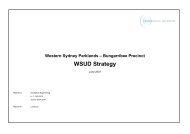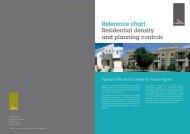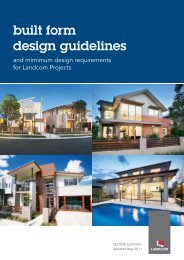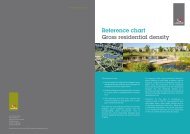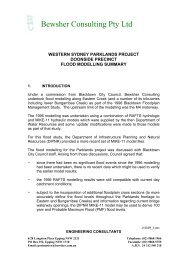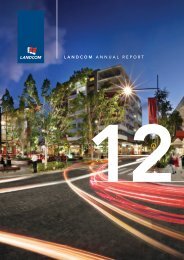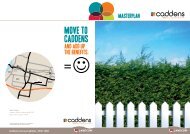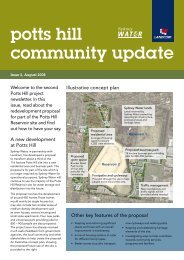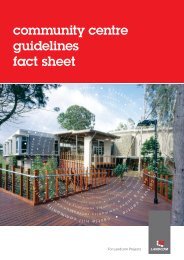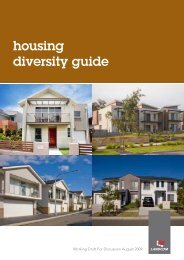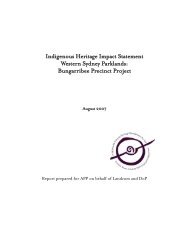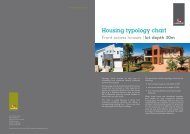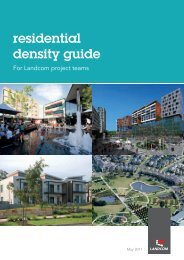Water Sensitive Urban Design
Book 2 | Planning and Management - WSUD
Book 2 | Planning and Management - WSUD
- No tags were found...
Create successful ePaper yourself
Turn your PDF publications into a flip-book with our unique Google optimized e-Paper software.
<strong>Water</strong> <strong>Sensitive</strong> <strong>Urban</strong> <strong>Design</strong><br />
Example of a grassed swale<br />
One of the important implications of the<br />
various flow regime changes outlined in<br />
Table 3 is that urban development leads<br />
to a situation where a rainfall event is more<br />
likely to lead to runoff. Small, frequent<br />
rainfall events in a natural catchment are<br />
mostly accounted for in rainfall losses and<br />
runoff is infrequent. The same rainfall<br />
events in a developed catchment lead to<br />
significant runoff in receiving waters.<br />
Typical storm hydrographs for a catchment<br />
before and after development are shown<br />
in Figure 12. Also shown in Figure 12 is<br />
a typical hydrograph for a developed<br />
catchment with traditional flood retarding<br />
measures (for example, on-site detention<br />
or regional flood retarding). Detention<br />
is able to reduce the peak flows below<br />
pre-development levels, but the volume<br />
of runoff and the flow duration remains<br />
much larger than in the natural case.<br />
2. Developed, without<br />
flood retarding<br />
Flow rate<br />
3. Developed, with<br />
flood retarding<br />
1. Natural<br />
Time<br />
Figure 12 - Typical storm flow hydrographs before and after development<br />
Book 2 | planning and management 27



